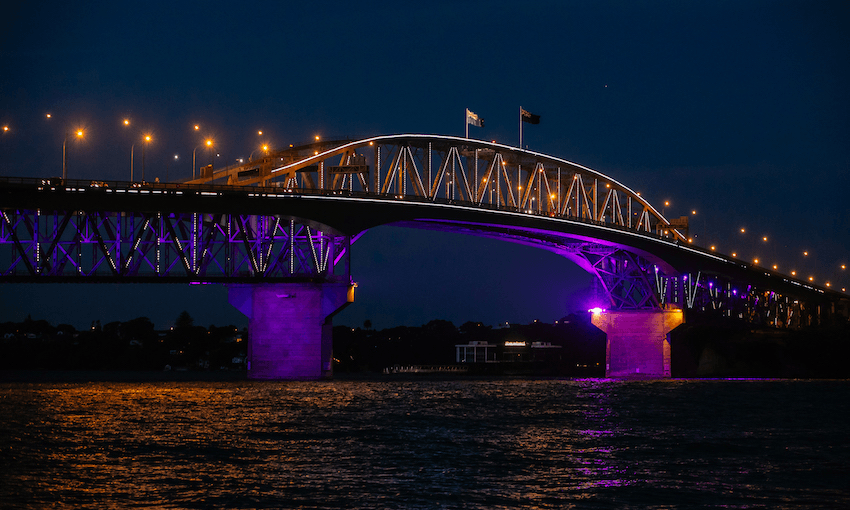One of the best reasons for lighting the Auckland Harbour Bridge is that it makes diversity impossible to ignore, writes Vector’s Beth Johnson.
These days, the words ‘kia ora’ are everywhere: it’s part of our everyday chat throughout New Zealand. It’s how we say hello. In the not-too-distant past greeting customers with a “kia ora” could get you fired.
Thirty-five years ago, a New Zealand Post telephone operator named Naida Glavish was threatened with dismissal for greeting callers with a simple “kia ora”. Top brass at the company had an apocalyptic vision that people of all ethnicities would soon demand their own greeting if the “non-standard expression” was allowed. The horror!
The issue was only settled once the prime minister of the day intervened, saying that kia ora was less offensive than an Aussie ‘g’day’. Now, Naida Glavish is a Dame.
Today, there is far more tolerance for the “non-standard” in our society: whether that’s in the language we use, ethnic origin, or choice of partner. You could even argue that diversity is the new normal, particularly in Auckland.
Our biggest city is one in which two in five residents were born outside New Zealand, and which has proud and resilient mana whenua who have had to fight hard for their rights and recognition.
But that’s often not reflected in the more ‘robust’ opinions expressed in our media. While views like Mike Hosking’s on the apparent irrelevance of te reo Māori increasingly look like the “non-standard” approach, they’re still the views being shared and read widely throughout the country. If only there was a way to proudly display Auckland’s diversity – at home, and internationally.
You know, for instance, a one-kilometre-long creative canvas made of 90,000 individually programmable lights…?
Since its launch earlier this year, Vector Lights has played host to light and sound shows celebrating a breadth of diversity. From Māori history to Chinese New Year, the rainbow community, Pasifika Festival, and Diwali coming up later this year.
The Waitangi Weekend show, Hauturu-O-Toi, was especially significant, as it represented the beginning of a ten-year arrangement with mana whenua in which different iwi will have creative input into Waitangi Day and Matariki light shows on a revolving basis.
Later this month, Te Kawerau ā Maki will be handed the honour of iwi manaaki (host iwi) for Matariki celebrations by their predecessor, Ngāti Manuhiri, at a tuku mauri (spiritual handover). Te Kawerau ā Maki representatives will be the creative force behind our upcoming Vector Lights show, which will tell the story of their ancestor Maki.
For 59 years, Auckland Harbour Bridge was a road that let boats through. Occasionally, people marched, and once a year people are allowed to run over it.
Today, as the eight-lane easel for the Vector Lights, the Auckland Harbour Bridge has quickly become a cultural billboard, reflecting Auckland to itself, and the world.
That’s how it’s going to be for the next nine-and-a-half years at least. Vector Lights will continue to reflect Auckland’s big days out, and the diversity of its people, with communities of interest able to put their own ideas forward.
If a picture speaks a thousand words, the Harbour Bridge in full flight must be a novel’s worth. And what it’ll be saying is “kia ora”.
This content is brought to you by Vector. If you live in Auckland, they also delivered the power you’re using to read it. And they’re creating a new energy future for all of us, as showcased by the incredible Vector Lights.
